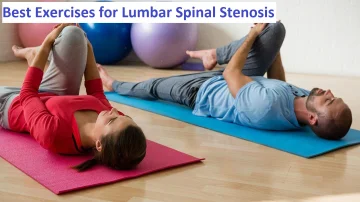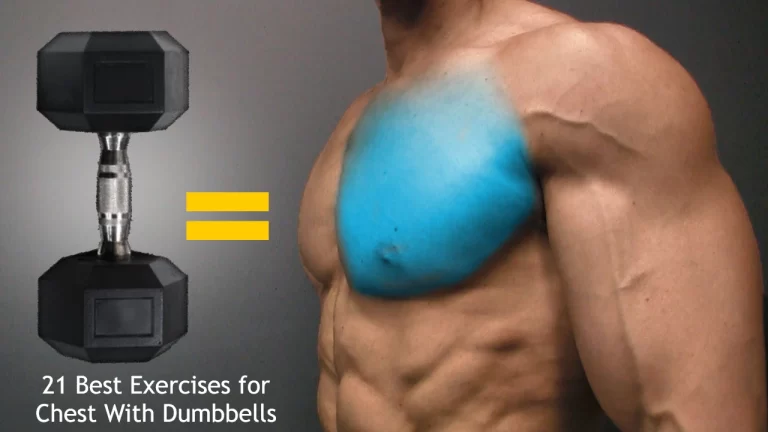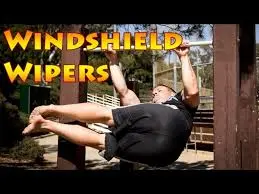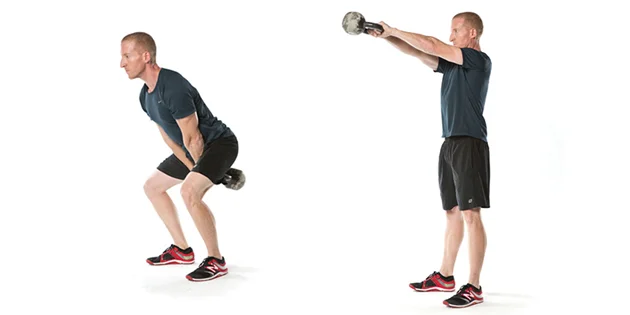15 Best Exercises for Lumbar Spinal Stenosis
Exercise for Lumbar Spinal Stenosis plays a crucial role in managing symptoms and improving overall function.
In general, exercises for lumbar spinal stenosis aim to improve flexibility, strengthen supporting muscles, and promote stability in the spine. Low-impact aerobic exercises like walking, swimming, or cycling can help improve cardiovascular fitness without putting excessive strain on the back. Stretching exercises that target the muscles in the lower back, hips, and thighs can help improve flexibility and reduce muscle tightness. Core-strengthening exercises, such as gentle abdominal and back exercises, can help stabilize the spine and support better posture.
It’s crucial to consult with a healthcare professional or physical therapist to develop an exercise program tailored to your specific condition and abilities. They can provide proper guidance and ensure that you’re performing exercises correctly and safely.
Physical therapy and exercise will enhance the blood flow to the stenosis area, carrying required oxygen and nutrients and flushing away toxic metabolites. Exercise relieves pressure on the nerve roots, bones, and other static structures in the back by keeping the muscles close to the spine strong.
Lumbar spinal stenosis is a medical disorder in which the spinal canal contracts and compresses the spinal cord and nerves in the lower back. This can generate pain, numbness, weakness, and additional symptoms in the legs, buttocks, and lower back.
What is lumbar spinal stenosis?
Lumbar Spinal stenosis happens when the space inside the lower backbone is too short. The spinal cord and nerves that pass through the spine may be compressed as a result of this. Spinal compression mostly happens in the lower back. Some people with lumbar spinal stenosis have no signs. Others may feel pain, tingling, numbness, and muscle deficiency. Symptoms can get more dangerous over time.
The main reason for stenosis is wear-and-tear differences in the spine associated with arthritis. Surgery may be required for those with severe spinal stenosis. Surgery can form more space inside the backbone. By doing this, the symptoms produced by stress on the spinal cord or nerves can be lessened. While the operation can not cure arthritis, so arthritis pain in the backbone may restart.
Causes of Lumbar Spinal Stenosis
- Bone spurs
- Herniated disks
- Dense ligaments
- Tumors
- Trunk injuries
- Arthritis
Symptoms of Lumbar Spinal Stenosis
- Symptoms can vary but the standard presentation is:
- prolonged Standing generates more pain.
- Either one or both lower limbs are in pain.
- Sitting lowers the pain.
- Mobility exercises for lumbar stenosis ease the pain.
- Pushing forward while stooping
- Alters the legs’ sensory or muscular power
The Importance of Exercising:
There have five important reasons to stay active:
- The training will enhance the blood flow to the affected area, taking required oxygen and nutrients and washing away harmful metabolites.
- Activity will strengthen the muscles near the torso, permitting to take the pressure off of the bones and extra static designs in the back.
- The signs of spinal stenosis can be made more threatening by tense muscles that pull and twist the spine, which can be prevented with exercise.
- Training will help maintain a healthy weight. weight can conduct to worsening back pain and leg aches.
- Staying active aids with emotional and mental health as well. Reaching up and pushing gets the blood and endorphins rushing and enhances one’s overall outlook, which in turn helps reduce pain and relieve physical symptoms.
The top exercises for lumbar stenosis are detailed below:
Walking
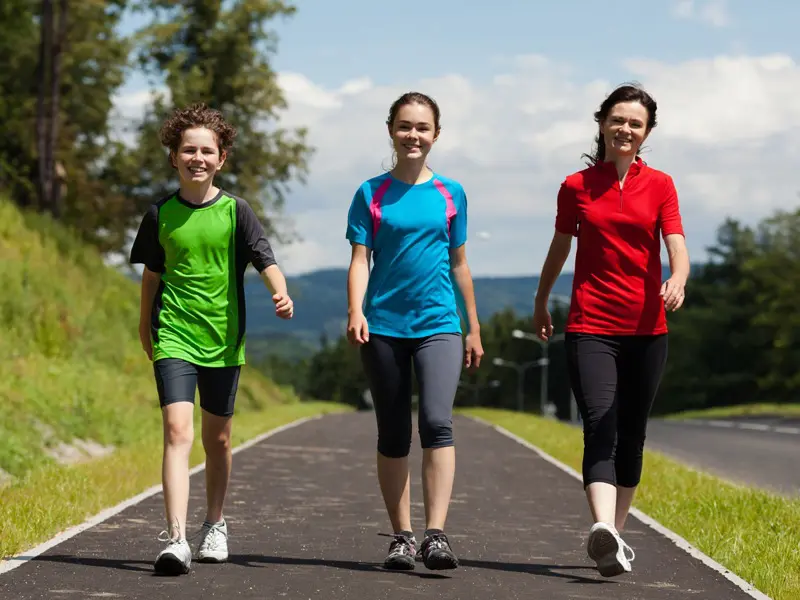
- Typically, walking is a good kind of exercise for everyone. It is low-impact if you have spinal stenosis, and you can easily change the pace as needed. Consider taking a daily stroll (perhaps during your lunch break or right after you get home).
- A regular walk is the perfect time to relax, and if you have suggested moving outside can be charming.

Swimming
- Swimming is another great exercise since it works all the muscles in your back in a protected, encouraging setting.
- Your weight is well supported by the water, resulting in a lighter load on your back.
Knee to Chest
Single knee to chest
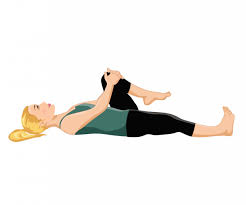
- You must assume a supine reclining position with your knees flexed and your feet flat on the ground to do a single knee-to-chest exercise.
- Now bring one knee up towards your chest while holding your hands close to it.
- For 10 to 20 seconds, maintain that knee close to your chest while supporting your lower back as it is pressed to the floor. Do 10 to 20 repetitions of 2 sets.
Double Knee-to-Chest

- You can begin this exercise by Your feet should be flat on the ground as you lay on your back with your knees extended.
- Take one knee, bring it to your chest, and then take the other. Never elevate both legs at once. Maintain for ten to twenty seconds. Unwind and lower each leg to the ground one at a time. For thirty seconds, pause.
- Repeat 2 to 4 times.
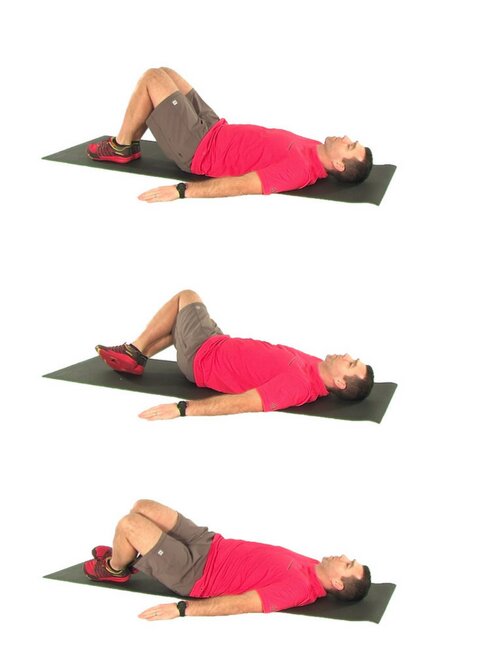
Lower Trunk Rotation
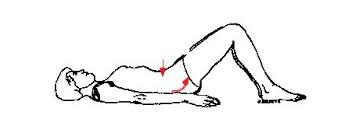
- You must lie on your back with your knees bent and turn your lower body from side to side while being handled.
- 20 times on each side.
Posterior Pelvic Tilt
- You can perform this exercise by lying on your back and shifting your pelvis until your lower back is flat against the floor.
- Hold for ten seconds, then eight to ten times.
Piriformis stretch

- You must either sit up straight and cross your affected leg over the opposite knee to begin the piriformis stretch, or you must lie on your back with both knees flexed.
- Drag your normal leg up and towards your chest using your hands. The injured glute will feel an intense stretch.
Prayer stretch
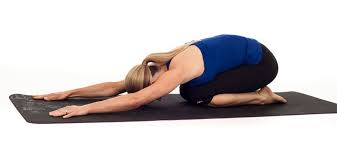
- A prayer stretch requires you to crawl and slowly lower your buttocks towards your foot until you feel a stretch along your back or buttocks.
- Three repetitions of 30 seconds each.
Pelvic tilt standing up
- Take a standing position and tighten your abdominal and buttock muscles to conduct a pelvic tilt.
- Almost flatten your lower back.
- Repeat ten times while holding for 7 to 10 seconds.
Isometric gluteal/abdominal strengthening

- You must lie on your back with your legs flexed to execute isometric gluteal/abdominal strengthening.
- Relax the muscles in your belly.
- Ten repetitions should be performed after holding for five to ten seconds.
- Slowly flex your glutes.
- Holding for five to ten seconds between each repetition.
- Three or more times a day.
Seated lumbar flexion
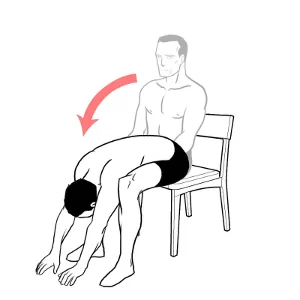
- You must sit upright in a chair to begin this activity. Lean forward gradually until you feel back tightness.
- 5 times through this drill.
- For five seconds, maintain this posture.
- Additionally, you can rotate your spine in lumbar flexion to the affected side.
Standing lumbar flexion
- To perform this exercise, stand upright with your feet out in front of you, shoulder-width apart.
- Until you notice the strain in your back, gradually lean forward while sliding your hands down your legs.
- Five times through this drill.
- For five seconds, maintain this posture.
- Additionally, you can rotate your spine in lumbar flexion to the affected side.
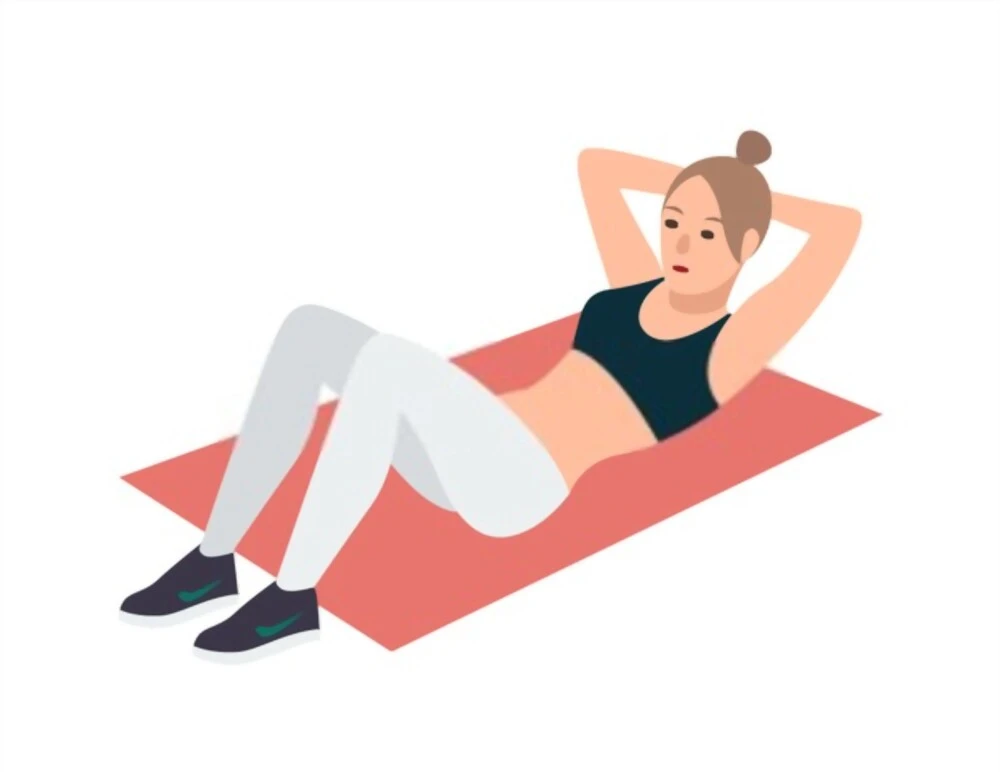
Partial sit-ups
- You must lie on your back, with your hands by your sides and your knees flexed, to do this exercise.
- While breathing, use your abdominal muscles to lift your upper back off the floor.
- Lift just enough to lift your scapula off the ground.
- Avoid lifting your head or pushing yourself off the base.
- Knees should remain bent and feet should remain flat on the ground.
- Your stomach muscles should be the only ones to feel the contraction.
- Lower your upper body gradually.
- Make the movements easy and gentle.
- Exercise 8 to 10 times more.

Partial diagonal sit-ups
- You must assume a supine reclining position with your hands at your side and your knees flexed to perform partial diagonal sit-ups.
- While breathing, use your abdominal muscles to lift your upper back off the floor.
- Your upper torso should be raised off the ground with one shoulder somewhat higher than the other.
- Do not lift your head or attempt to push yourself off the ground.
- Maintain flexed knees and stable feet on the base.
- Your abdominal muscles should be the only ones that can feel the squeeze.
- Finish the motion gently and pleasantly.
- Lower your upper body gradually.
- Lift the other shoulder higher to repeat the motion.
- Exercise eight to ten times.
- Maintain the posture for two seconds.
Front plank
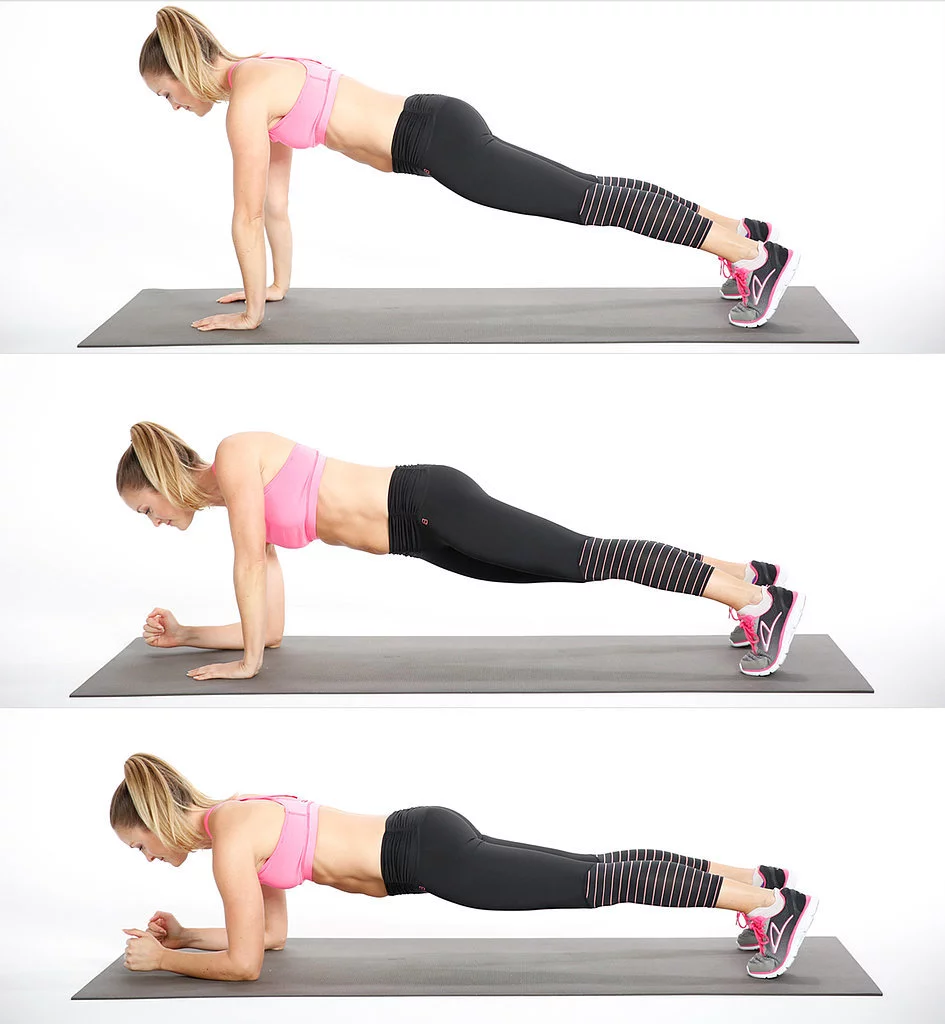
- Another fundamental position is the plank. It’s a great, low-impact way to develop core strength. If your wrists are weak, you can support yourself throughout these poses on one or both knees on the ground if staying upright proves to be too challenging. Keep your core tight and your back straight while performing these spinal stenosis exercises.
- Start by putting your shoulders below your wrists and your hips below your knees. Tuck your toes under your feet and straighten one leg before the other to create a long line with your body.
- Pull the body in so it doesn’t sag by focusing on your core and abdomen. To make their posture more comfortable, people frequently dip or elevate their hips excessively. The purpose for a strong, straight line. To guarantee appropriate form, you could practice with somebody else or in front of a mirror.
- Start by holding your breath for 30 seconds; eventually, extend that to three minutes.
Side plank

- Start in a plank posture with your feet tucked under, your wrists tucked under your shoulders, and your legs straight behind you.
- Put your weight on your right hand and the outside of your right foot, and turn your body so it is parallel to the ground.
- The left foot can be either stacked on top of the right or put on the ground with both legs straight. You can adjust by bending your left knee and planting your left foot in front of your right knee.
- Lifting the left arm to the sky while maintaining a downward glance or softly twisting the neck to look up at the sky. Make sure it feels comfortable in the neck, whichever choice you select.
- Rest here for three to five days.
If you have lumbar canal stenosis, which exercises should you avoid?
Avoid Excessive Back Extension:
When you have stenosis, your spine is put under extra stress when you lean backward while standing. It also has an impact on maintaining a straight posture while leaning as far as you can and placing your hands on your hips. In a few rare instances, this type of stenosis on the back of the vertebrae may aid in releasing some inflammatory tissue to allow room for the spinal cord.
Regardless, in many cases, it shows more harmful symptoms and more aches. During Back extension exercise or activity that increases pain or discomfort, try to avoid that exercise, and more significantly, try to avoid any movement that goes your back to go into extreme extension. i.e. anything needing you to flex over backward. Inflammation may become more dangerous due to the increased stenosis.
Avoid Long Walks or Running:
In spinal stenosis, a variety of activities are necessary, but too many or the wrong ones can make your discomfort worse. Running and jogging are typically seen as comfortable exercises that have a low or mild impact. Running and jogging, however, fall within the category of high-impact workouts.
The knees and spine are less susceptible to repetitive concussion than other body components. On the other side, excessively long-distance walking might exacerbate back pain. To increase speed and distance gradually without breaking into a jog, start with shorter, more manageable distances.
Avoid Certain Stretches and Poses:
The previously mentioned back extension can be found in many common positions and spinal stenosis exercises, such as the cobra pose, the bridge, and numerous lower back workouts that focus on hyperextension (such as the Superman). While supporting the lower back muscles is a good idea, it is far preferable to avoid lumbar flexion or extension while doing so. Consider isometric workouts instead, which focus on holding the back tight against an external force while stabilizing it.
Avoid Loading a Rounded Back:
People with backaches may benefit greatly from using free weights; they can start exercising with the help of a qualified doctor. Numerous exercises can help the muscles support the spine and make it more comfortable to maintain a good posture. Free-importance exercises can also help you improve unilateral posture in your body, such as varied strength in the legs, hips, shoulders, and arms, which can cause additional back pain.
Free-weight exercises, however, are prone to harm if done incorrectly. One such instance is any movement requiring hip hinging, such as bent-over rows, passes, and deadlifts. Any rounding of the back might seriously endanger the strength of the muscles that support the spine and put the discs under shearing strain. To prevent applying excessive force to your back, be sure to take each exercise one at a time and be confident as you progress through the exam.
Avoid Too Much Bed Rest:
Although it may be persuasive to stay in bed as much as is necessary, excessive bed rest can weaken your muscles, strain your back, and cause inflammation. By staying active, you can improve your quality of life and reduce discomfort for a small daily expenditure of time devoted to moving and sweating.
Avoid Contact Sports:
While being active is beneficial, make an effort to join sports that restrict impulsive impact and touch. Sports like martial arts, football, basketball, and soccer are a few examples where a healthy activity can quickly result in a severe tear or fracture, especially if you make physical contact with another person.
Lifestyle changes:
These typical variations may alter your life:
- Keep in mind to move forward without straining your lower back.
- Repeatedly adjust your position.
- Avert repeatedly sits down.
- Avoid the postures that hurt you.
- Daily physical activity.
- Keep your weight in check.
- Try to keep a straight posture.
Lumbar spine stenosis can cause the following complications:
- Coccydynia
- Due to a lack of sensation, the bladder or bowels become damaged.
- Difficulty walking
- Paraplegia (both lower limbs are paralyzed)
- Difficulty with daily activities such as sitting, standing, and walking.
FAQ
Which is the most useful activity for lumbar stenosis?
Walking is the most suitable exercise for lumbar stenosis if you have spinal stenosis. It is a low-impact exercise, and you can smoothly change the pace as required. Assume a daily walk (maybe on your lunch break or as soon as you reach the house).
Which exercises should be avoided with lumbar spinal stenosis?
Activities to avoid spinal stenosis include contact sports like basketball, football, soccer, and martial arts. These movements can involve impulsive concussion to the spine, which may direct to further injury. Exercises that affect jumping, such as jumping rope, should be evaded with spinal stenosis.
Which is the most suitable sitting position for this condition?
In spinal stenosis, individuals generally experience minor pain with bending forward, particularly with sitting. Analyses of the lumbar spine show that leaning forward can improve the space open for the nerves.
Which remedy makes spinal stenosis competently?
Physical therapy is the first course of treatment for spinal stenosis along with anti-inflammatory medication. In physical therapy, we work on enhancing mobility and strengthening the core (to sustain the back).
How can you improve lumbar spinal stenosis without surgery?
Numerous people with mild spinal stenosis discover that nonsurgical treatments like painkillers and physical therapy aid them to manage their symptoms and maintain their level of activity.
What is harmful to spinal stenosis?
Extreme Back Extension
One of the more typical stretches we manage to engage in after a long period of expended sitting or hunching over is the standing back extension, or more aptly, the standing lumbar extension. It affects standing up directly, placing your hands on your hips, and leaning back as much as you can.
Which is the most typical reason for stenosis?
The most expected cause of spinal stenosis is wear-and-tear changes in the spine related to arthritis. Extreme forms of spinal stenosis may necessitate surgery in certain people. Surgery can form more space inside the spine. This can reduce the symptoms induced by pressure on the spinal cord or nerves.
How do you prevent stenosis?
Exercise can help control stenosis by maintaining the muscles and ligaments supporting your spine and extending them to help maintain your flexibility. Activities such as walking thirty minutes a day with good posture are a wonderful way to keep your backbone in form.
What is a typical problem for a person with spinal stenosis?
You could find it difficult to walk long distances or that you need to lean forward to relieve pressure on your lower back if you have lumbar spinal stenosis. You may feel pain or numbness in your lower limb. If it is more severe then you may have problems in controlling your bowel and bladder.
Is heat or cold therapy good for spinal stenosis?
Using hot or cold therapy for controlling spinal stenosis is a common suggestion for pain relief. Hot therapy helps to relax muscles and enhance the blood flow to the involved area, helping to facilitate healing. ice therapy can assist to numb the involved area, leading to pain relief.

